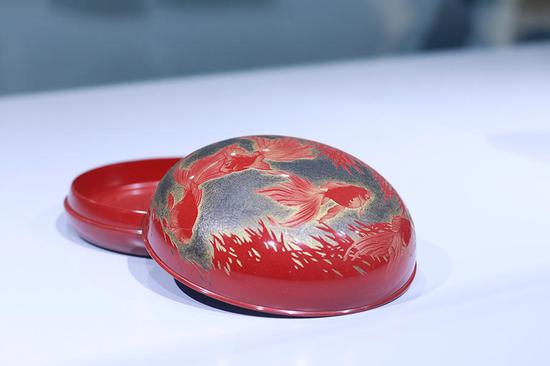
A researcher indicates the low luminosity of a strain of MRSA that has been injected with M21,Kao's breakthrough treatment. The lower level of luminosity indicates that the bacteria has become less toxic. (Photo by Calvin Ng/China Daily)
A stealthy enemy
To Kao, S. aureus is a stealthy enemy. About one-third of people worldwide have some in their nose or on their skin. This pattern of coexistence is decades old, but the pathogen rarely attacks the host.
Staph infection only happens when the bacteria penetrates the body, either through a break in the skin or through the digestive or respiratory tracts. The infection causes damage ranging from minor skin lesions to more serious conditions such as pneumonia or endocarditis, an infection of the heart's inner lining.
In 2009, Ho Pak-leung, honorary consultant at Hong Kong's Queen Mary Hospital, confronted an intimidating MRSA infection.
A 42-year-old man who had A-type swine flu (aka H1N1) acquired MRSA in the community - known as CA-MRSA - and died two days after being admitted to the hospital.
"We treated him using aggressive medications, but they were of no help," Ho recalled. "The patient died of pneumonia."
MRSA not only destroyed lives, it drove up medical costs, mainly due to patients' prolonged stays in hospital. According to a 2013 California study, the average hospital cost was around $14,000 per MRSA case, around twice the cost of other hospital stays.
Before, most MRSA occurrences emerged from hospitals or healthcare institutions, where the risk of infection was higher, and were identified as hospital-associated MRSA, or HA-MRSA.
Though Hong Kong's first official CA-MRSA case was recorded in 2004, Ho said the first case actually occurred in March, 2001, when an 8-month-old boy who displayed a number of severe illnesses died 26 hours after being hospitalized.
Since then, Ho, chairman of the Health Protection Program for Antimicrobial Resistance at the Centre for Health Protection, has been monitoring and observing the transmission of the superbug.
Ho, a close colleague of Kao, is an avid researcher. He contributed to Kao's non-antibiotic study, and both men believe the overuse of antibiotics has helped S. aureus develop resistance to many of them.
Growing use
In the first half of this year, Hong Kong saw 632 CA-MRSA infections, according to the Center for Health Protection, more than twice the number reported during the whole of 2008.
According to a recent survey, about 49 percent of 1,200 people questioned in the city said they took antibiotics last year, up from 34.6 percent in 2011.
In a separate study, 97.9 percent of 1,255 interviewees said they obtained antibiotics from a physician.
The percentage should have been lower, given that only 10 percent of flu symptoms are caused by bacterial infection and antibiotics act against bacteria but not viruses. Therefore, it seems likely that a large number were prescribed to treat viral infections, such as common colds, sore throats and flu.
On the positive side, antibiotics have been prescribed as preventive measures. Patients with viral infections have weakened immune systems, which makes them vulnerable to secondary bacterial infections. Antibiotics may help to prevent that, Kao said.
Margret Ip, honorary consultant at the Department of Microbiology at Prince of Wales Hospital, said Hong Kong's public hospitals imposed vigorous regulation of antibiotic prescription after SARS, so antibiotic misuse may be rife in the private health sector.
As pathogens keep evolving and become more complex, the symptoms of bacterial and viral infections are now more indistinct, Ip said: "It's possible that doctors in private clinics, without sufficient and updated patient data to refer to, mistakenly prescribe antibiotics for the wrong ailments."
She suggested establishing a platform to share information between hospitals and clinics, so family doctors can keep track of changes in contagious diseases and the best remedies to employ.
Hong Kong's private practitioners can log antibiotic prescriptions on an electronic health record system, but it's voluntary.
The city is using the platform to monitor antibiotic use in private clinics, but many people have questioned its effectiveness because physicians rarely report excessive prescription if it is not mandatory to do so.


















































